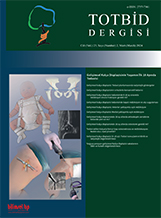
In the treatment of developmental dysplasia of the hip (DDH), it is mainly aimed to reduce the hip joint in a concentric, harmonious, balanced and safe manner. Early treatment will ensure the continued development of the hip and will also minimize complications such as gait disorders, developmental problems and degenerative hip diseases that may occur in the future. Especially in young children, closed reduction and cast immobilisation play an important role in the DDH treatment process with high success and low complication rates. Closed reduction is still the most valuable treatment modality in the treatment of children older than six months. It is also indicated in case of failure in DDH patients who have been treated with the Pavlik harness. The procedure is performed on a spica table under general anesthesia or deep sedation under guidance of fluoroscopy. Closed reduction includes gentle reduction, reduction and stability control by arthrogram, and application of a pelvipedal casting in the human position. Treatment includes a 12-week period with casting application repeated 2-3 times at different intervals. This review contains up-to-date information and useful tips on closed reduction, arthrogram and casting application in DDH treatment.